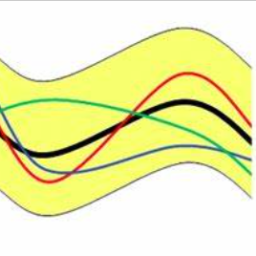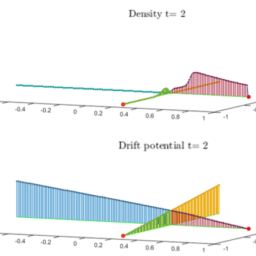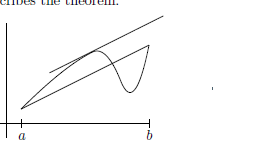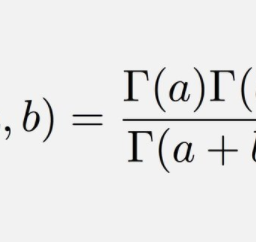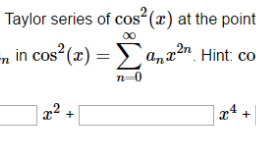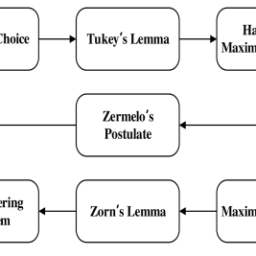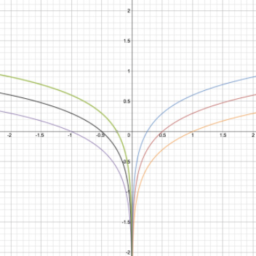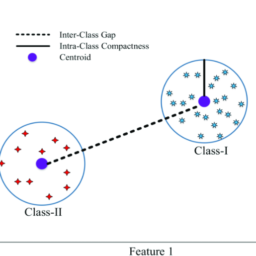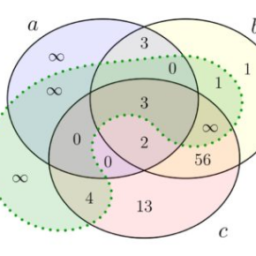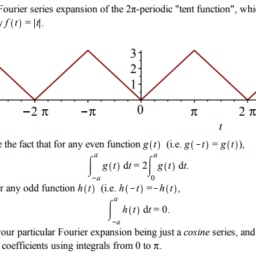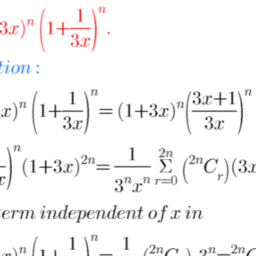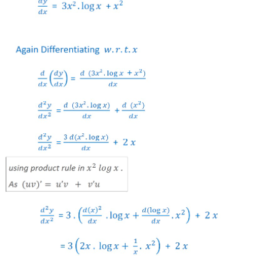9.8 Fubini’s Theorem an Introduction
Fubini’s theorem has become the name of a theorem which involves interchanging the order of integration in iterated integrals. You may have seen it mentioned in a beginning calculus course. It is actually an incredibly deep result, much more so than what will be indicated here. Here I will only consider enough to allow what will be done in this book. It turns out that iterated integrals are what occur naturally in many situations, and each integral in an iterated integral is a one dimensional notion, so it is natural to consider the interchange of iterated integrals in a book on single variable calculus. All of this depends on the theorems about continuous functions defined on a subset of $F^{p}$. In the case considered here, $p=2$.
The following theorem is just like an earlier one for functions of one variable.
206
CHAPTER 9. INTEGRATION
Theorem $9.8 .1$ Let $f$ be increasing and let $g$ be continuous on $[a, b]$. Then there exists $c \in[a, b]$ such that
$$
\int_{a}^{b} g d f=g(c)(f(b)-f(c))
$$
Proof: If $f$ is constant, there is nothing to prove so assume $f(b)>f(a)$. Let $M \equiv \max {g(x): x \in[a, b]}, m \equiv \min {g(x): x \in[a, b]}$. Then in a Riemann sum for $\int_{a}^{b} g d f$, if $g$ is replaced by $M$, the resulting Riemann sum will increase and if it is replaced with $m$, the resulting sum will decrease. Therefore,
$$
m(f(b)-f(a))=\int_{a}^{b} m d f \leq \int_{a}^{b} g d f \leq \int_{a}^{b} M d f=M(f(b)-f(a))
$$
and so $m \leq \frac{1}{f(b)-f(a)} \int_{a}^{b} g d f \leq M$. Therefore, by the intermediate value theorem, there is $c \in[a, b]$ such that $\frac{1}{f(b)-f(a)} \int_{a}^{b} g d f=g(c)$.
Lemma 9.8.2 Let $f:[a, b] \times[c, d] \rightarrow \mathbb{R}$ be continuous at every point so it is uniformly continuous. Let $\alpha, \beta$ be increasing on $[a, b],[c, d]$ respectively. Then
$$
x \rightarrow \int_{c}^{d} f(x, y) d \beta(y), y \rightarrow \int_{a}^{b} f(x, y) d \alpha(x)
$$
are both continuous functions.
Proof: Consider the first. The other is exactly similar.
$$
\begin{aligned}
\mid \int_{c}^{d} f(x, y) d \beta(y)-& \int_{c}^{d} f(\hat{x}, y) d \beta(y)|=| \int_{c}^{d}(f(x, y)-f(\hat{x}, y)) d \beta(y) \mid \
& \leq \int_{c}^{d}|f(x, y)-f(\hat{x}, y)| d \beta(y)
\end{aligned}
$$
But by uniform continuity, if $|x-\hat{x}|$ is small enough, then the integrand
$$
|f(x, y)-f(\hat{x}, y)|<\varepsilon
$$
and so the integral in the above is no larger than $\varepsilon(\beta(d)-\beta(c))$. Since $\varepsilon$ is arbitrary, this shows the claim.
Note that, since these are continuous functions, it follows from Theorem $9.3 .7$ that it makes perfect sense to write the iterated integrals
$$
\int_{a}^{b} \int_{c}^{d} f(x, y) d \beta(y) d \alpha(x), \int_{c}^{d} \int_{a}^{b} f(x, y) d \alpha(x) d \beta(y)
$$
Of course the burning question is whether these two numbers are equal. This is the next theorem.
$$
\int_{a}^{b} \int_{c}^{d} f(x, y) d \beta(y) d \alpha(x), \int_{c}^{d} \int_{a}^{b} f(x, y) d \alpha(x) d \beta(y)
$$
Of course the burning question is whether these two numbers are equal. This is the next theorem.
Theorem 9.8.3 Let $f:[a, b] \times[c, d] \rightarrow \mathbb{R}$ be continuous and let $\beta, \alpha$ be increasing functions on $[c, d],[a, b]$ respectively. Then
$$
\int_{a}^{b} \int_{c}^{d} f(x, y) d \beta(y) d \alpha(x)=\int_{c}^{d} \int_{a}^{b} f(x, y) d \alpha(x) d \beta(y)
$$
Proof:
$$
\int_{a}^{b} \int_{c}^{d} f(x, y) d \beta(y) d \alpha(x)=\sum_{i=1}^{n} \int_{x_{i-1}}^{x_{1}} \int_{c}^{d} f(x, y) d \beta(y) d \alpha(x)
$$
207
9.8. FUBINI’S THEOREM AN INTRODUCTION
$$
\begin{aligned}
&=\sum_{i=1}^{n} \int_{x_{i-1}}^{x_{i}} \sum_{j=1}^{m} \int_{y_{j-1}}^{y_{j}} f(x, y) d \beta(y) d \alpha(x) \
&=\sum_{i=1}^{n} \sum_{j=1}^{m} \int_{x_{i-1}}^{x_{i}} \int_{y_{j-1}}^{y_{j}} f(x, y) d \beta(y) d \alpha(x)
\end{aligned}
$$
By the mean value theorem for integrals, Theorem $9.8 .1$
$$
\begin{aligned}
&=\sum_{i=1}^{n} \sum_{j=1}^{m} \int_{x_{1-1}}^{x_{i}}\left(\beta\left(y_{j}\right)-\beta\left(y_{j-1}\right)\right) f\left(x, t_{j}\right) d \alpha(x) \
&=\sum_{i=1}^{n} \sum_{j=1}^{m}\left(\beta\left(y_{j}\right)-\beta\left(y_{j-1}\right)\right)\left(\alpha\left(x_{i}\right)-\alpha\left(x_{i-1}\right)\right) f\left(s_{i}, t_{j}\right)
\end{aligned}
$$
Also, by the same reasoning,
$$
\begin{aligned}
& \int_{c}^{d} \int_{a}^{b} f(x, y) d \alpha(x) d \beta(y) \
=& \sum_{j=1}^{m} \sum_{i=1}^{n}\left(\beta\left(y_{j}\right)-\beta\left(y_{j-1}\right)\right)\left(\alpha\left(x_{i}\right)-\alpha\left(x_{i-1}\right)\right) f\left(s_{i}^{\prime}, t_{j}^{\prime}\right)
\end{aligned}
$$
and now because of uniform continuity, it follows that if the partition points are close enough,
$$
\left|f\left(s_{j}^{\prime}, t_{j}^{\prime}\right)-f\left(s_{j}, t_{j}\right)\right|<\frac{\varepsilon}{(\beta(d)-\beta(c))(\alpha(b)-\alpha(a))}
$$
and so
$$
\left|\int_{c}^{d} \int_{a}^{b} f(x, y) d \alpha(x) d \beta(y)-\int_{c}^{d} \int_{a}^{b} f(x, y) d \alpha(x) d \beta(y)\right|<\varepsilon
$$
Since $\varepsilon$ is arbitrary, this shows the two iterated integrals are equal.
The following is concerning a very important formula. First recall the arctan function. Restricting tan to $\left(-\frac{\pi}{2}, \frac{\pi}{2}\right)$, this function is one to one and has an inverse function called arctan. Thus arctan $(y)=x$ where $x \in\left(-\frac{\pi}{2}, \frac{\pi}{2}\right)$ and $\tan x=y$. Then, using the theory of the derivative of inverse functions, it follows that arctan is differentiable and
$$
\arctan ^{\prime}(y) y^{\prime}(x)=1
$$

Fubini 定理已成为一个定理的名称,该定理涉及在迭代积分中交换积分阶。您可能已经在开始的微积分课程中看到过它。这实际上是一个令人难以置信的深刻结果,比这里要说明的要多得多。在这里,我将只考虑足以允许在本书中完成的内容。事实证明,迭代积分是在许多情况下自然发生的,并且迭代积分中的每个积分都是一维概念,因此在单变量微积分的书中考虑迭代积分的互换是很自然的。所有这些都取决于定义在 $F^{p}$ 子集上的关于连续函数的定理。在这里考虑的情况下,$p=2$。
下面的定理就像一个变量的函数的早期定理。
206
第 9 章集成
定理 $9.8 .1$ 令 $f$ 递增且令 $g$ 在 $[a, b]$ 上连续。那么存在 $c \in[a, b]$ 使得
$$
\int_{a}^{b} g d f=g(c)(f(b)-f(c))
$$
证明:如果 $f$ 是常数,则没有什么可以证明的,因此假设 $f(b)>f(a)$。设 $M \equiv \max {g(x): x \in[a, b]}, m \equiv \min {g(x): x \in[a, b]}$。那么在 $\int_{a}^{b} gdf$ 的黎曼和中,如果将 $g$ 替换为 $M$,则生成的黎曼和将增加,如果将其替换为 $m$,则生成的和将为减少。所以,
$$
m(f(b)-f(a))=\int_{a}^{b} mdf \leq \int_{a}^{b} gdf \leq \int_{a}^{b} M df=M (f(b)-f(a))
$$
所以 $m \leq \frac{1}{f(b)-f(a)} \int_{a}^{b} g d f \leq M$。因此,根据中间值定理,有 $c \in[a, b]$ 使得 $\frac{1}{f(b)-f(a)} \int_{a}^{b} gdf= g(c)$。
引理 9.8.2 令 $f:[a, b] \times[c, d] \rightarrow \mathbb{R}$ 在每一点上都是连续的,所以它是一致连续的。令$\alpha, \beta$ 分别在$[a, b],[c, d]$ 上增加。然后
$$
x \rightarrow \int_{c}^{d} f(x, y) d \beta(y), y \rightarrow \int_{a}^{b} f(x, y) d \alpha(x)
$$
都是连续函数。
证明:考虑第一个。另一个完全相似。
$$
\开始{对齐}
\mid \int_{c}^{d} f(x, y) d \beta(y)-& \int_{c}^{d} f(\hat{x}, y) d \beta(y) |=| \int_{c}^{d}(f(x, y)-f(\hat{x}, y)) d \beta(y) \mid \
& \leq \int_{c}^{d}|f(x, y)-f(\hat{x}, y)| d \beta(y)
\end{对齐}
$$
但是通过一致连续性,如果 $|x-\hat{x}|$ 足够小,则被积函数
$$
|f(x, y)-f(\hat{x}, y)|<\varepsilon
$$
所以上面的积分不大于$\varepsilon(\beta(d)-\beta(c))$。由于 $\varepsilon$ 是任意的,这显示了声明。
请注意,由于这些是连续函数,因此从定理 $9.3 .7$ 得出,编写迭代积分非常有意义
$$
\int_{a}^{b} \int_{c}^{d} f(x, y) d \beta(y) d \alpha(x), \int_{c}^{d} \int_{a }^{b} f(x, y) d \alpha(x) d \beta(y)
$$
当然,迫切的问题是这两个数字是否相等。这是下一个定理。
$$
\int_{a}^{b} \int_{c}^{d} f(x, y) d \beta(y) d \alpha(x), \int_{c}^{d} \int_{a }^{b} f(x, y) d \alpha(x) d \beta(y)
$$
当然,迫切的问题是这两个数字是否相等。这是下一个定理。
定理 9.8.3 令 $f:[a, b] \times[c, d] \rightarrow \mathbb{R}$ 是连续的并且令 $\beta, \alpha$ 是 $[c, d] 上的增函数, [a, b]$ 分别。然后
$$
\int_{a}^{b} \int_{c}^{d} f(x, y) d \beta(y) d \alpha(x)=\int_{c}^{d} \int_{a }^{b} f(x, y) d \alpha(x) d \beta(y)
$$
证明:
$$
\int_{a}^{b} \int_{c}^{d} f(x, y) d \beta(y) d \alpha(x)=\sum_{i=1}^{n} \int_ {x_{i-1}}^{x_{1}} \int_{c}^{d} f(x, y) d \beta(y) d \alpha(x)
$$
207
9.8。 FUBINI 定理简介
$$
\开始{对齐}
&=\sum_{i=1}^{n} \int_{x_{i-1}}^{x_{i}} \sum_{j=1}^{m} \int_{y_{j-1} }^{y_{j}} f(x, y) d \beta(y) d \alpha(x) \
&=\sum_{i=1}^{n} \sum_{j=1}^{m} \int_{x_{i-1}}^{x_{i}} \int_{y_{j-1} }^{y_{j}} f(x, y) d \beta(y) d \alpha(x)
\end{对齐}
$$
根据积分的中值定理,定理 $9.8 .1$
$$
\开始{对齐}
&=\sum_{i=1}^{n} \sum_{j=1}^{m} \int_{x_{1-1}}^{x_{i}}\left(\beta\left(y_ {j}\right)-\beta\left(y_{j-1}\right)\right) f\left(x, t_{j}\right) d \alpha(x) \
&=\sum_{i=1}^{n} \sum_{j=1}^{m}\left(\beta\left(y_{j}\right)-\beta\left(y_{j-1 }\right)\right)\left(\alpha\left(x_{i}\right)-\alpha\left(x_{i-1}\right)\right) f\left(s_{i}, t_ {j}\右)
\end{对齐}
$$
另外,同样的道理,
$$
\开始{对齐}
& \int_{c}^{d} \int_{a}^{b} f(x, y) d \alpha(x) d \beta(y) \
=& \sum_{j=1}^{m} \sum_{i=1}^{n}\left(\beta\left(y_{j}\right)-\beta\left(y_{j-1 }\right)\right)\left(\alpha\left(x_{i}\right)-\alpha\left(x_{i-1}\right)\right) f\left(s_{i}^{ \prime}, t_{j}^{\prime}\right)
\end{对齐}
$$
现在由于均匀连续性,如果分割点足够接近,
$$
\left|f\left(s_{j}^{\prime}, t_{j}^{\prime}\right)-f\left(s_{j}, t_{j}\right)\right|< \frac{\varepsilon}{(\beta(d)-\beta(c))(\alpha(b)-\alpha(a))}
$$
所以
$$
\left|\int_{c}^{d} \int_{a}^{b} f(x, y) d \alpha(x) d \beta(y)-\int_{c}^{d} \ int_{a}^{b} f(x, y) d \alph

微积分note Integer Multiples of Irrational Numbers 请认准UprivateTA™. UprivateTA™为您的留学生涯保驾护航。


